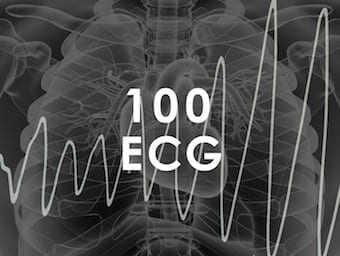
ECG Case 135
A single agent overdose causing AV blockade, QRS widening, and QT prolongation.... but reports of death only if QRS > 200ms. Which medication is this?

A single agent overdose causing AV blockade, QRS widening, and QT prolongation.... but reports of death only if QRS > 200ms. Which medication is this?

Crushing chest pain and diaphoresis. New inferior Q waves and T-wave inversion, yet this is a normal ECG. Can you explain why?

Chest pain, shock and ST elevation in aVR. The LAST place this patient needs to be is in the cath lab

A negative troponin, resolved chest pain, and a "normal" ECG does not exclude ACS requiring emergent intervention

An 88-year-old man with palpitations and a HR fixed at 150. This is not flutter or AVNRT -- can you explain why?

Yet another ED patient with SVT -- but there is one feature on this ECG that suggests a congenital structural abnormality, can you spot it?

A man in his 40s with exertional chest pain and a small troponin rise. Is this just LVH? Bedside echo gives us the answer

There are five features on this "normal" ECG that suggest impending inferior STEMI - can you spot them?

Can ST depression and T wave inversion in aVL be normal? Can BER cause reciprocal changes? Learn about using the QRS-T wave angle to answer these questions

A man in his 40s is brought in GCS 3. Can you interpret these ECG and echo abnormalities to appropriately guide management?

With worked examples in the next three posts, we look at ways to recognise early ECG features of OMI before waiting for a "STEMI" to evolve

A 24-year-old female presents following a syncopal episode. This case incorporates basic bedside echo into our ED work-up of syncope.